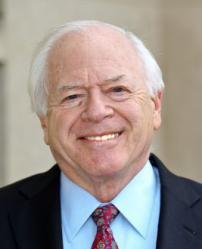A curious product of our presidential system is that while the electorate casts its vote for only two individuals, it in effect chooses hundreds of individuals to govern. The president-elect must quickly build an administration of private citizens that reflects his or her vision. This act of administration-building has been called “a uniquely American enterprise.” In most democracies the pieces of the incoming government are already in place, as members of a shadow cabinet take their places alongside the new leader. It is the very “formlessness” in the United States, says the New York Times, that makes “a president-elect’s task at once exciting and daunting.”
For those on the inside, noted Martin Anderson, who has been there twice, it is a time of “delicious chaos.” For those on the outside, bankable information is hard to come by. “Those who know aren’t talking,” said insider Edwin Meese during the 1980 transition, “and those who are talking don’t know.” It is a complicated business, largely conducted behind closed doors.
For the national press corps, the journalists who shape our collective judgment of what kind of president we are about to get, covering the transition mainly boils down to a simple story about people. Who?s in? Who?s out? And who are the ins? Why were they chosen? Who do they represent? Are they competent? Controversial? And why did it take so long to assemble the president’s White House team and Cabinet?
Thus the initial success and lingering impression of each presidency will be largely determined by the selection of about 30 people picked in haste during the brief period between election and inauguration. These include the secretaries of the 14 executive departments: State, Treasury, Defense, Justice, Interior, Agriculture, Commerce, Labor, Health and Human Services, Housing and Urban Development, Transportation, Energy, Education, and Veterans Affairs.
Congressional acts award Cabinet rank to the U.S. trade representative and the “drug czar.” The president fills out the rest of his Cabinet as he sees fit. For instance, President Clinton’s second-term team includes the administrator of the Environmental Protection Agency, director of the Office of Management and Budget, director of the Central Intelligence Agency, U.S. representative to the United Nations, administrator of the Small Business Administration, director of the Federal Emergency Management Agency, chair of the Council of Economic Advisers, and the White House chief of staff. Notable also are other top members of the White House staff, such as the national security adviser, the White House counsel, press secretary, and the primary economic and domestic policy aides. In assessing the ability of a president to get off to a fast and favorable start, these are the appointees who put a face on the administration.
Paradoxically these high-profile appointments are the easiest a president will ever make. Most of the men and women chosen are personally known to him. Some are among his closest friends. Some have just finished running his campaign. All have reputations that are easy to check out. Moreover, the historical record (as opposed to the anecdotal record) shows that the president is given considerable latitude by the public, the press, and even the Senate. Yet personnel mistakes, sometimes serious errors, have plagued chief executives even before they actually take office.
This essay first summarizes the experiences in this regard of the five most recent first-term transitions: Richard Nixon (1968-69), Jimmy Carter (1976-77), Ronald Reagan (1980-81), George Bush (1988-89), and Bill Clinton (1992-93). The mistakes and accomplishments of previous presidents give incoming administrations a roadmap to complete successful transitions. Lessons can be drawn from prior events. These lessons should be heeded early in the transition if presidents want to avoid the accusation of drifting and maintain control over their own messages.
In analyzing the transition periods of the last five presidents, eight essential lessons can be drawn.
They are:
BE PREPARED. Pre-election transition planning is essential.
ACT QUICKLY. Have your key White House staff in place by Thanksgiving and your Cabinet secretaries announced by Christmas.
PUT THE WHITE HOUSE FIRST. Choose your White House team before selecting your Cabinet.
THINK CLUSTERS. Choose appointees as a team.
SEND A MESSAGE. The appointments you make send a message about the administration’s priorities.
CHOOSE YOUR DEMOGRAPHIC GOALS. Think about what you want your administration to look like.
FEED THE BEAST. Give the press corps something to cover.
SMILE AND GROVEL. Handle senators with care. They are the ones who must confirm your picks.



